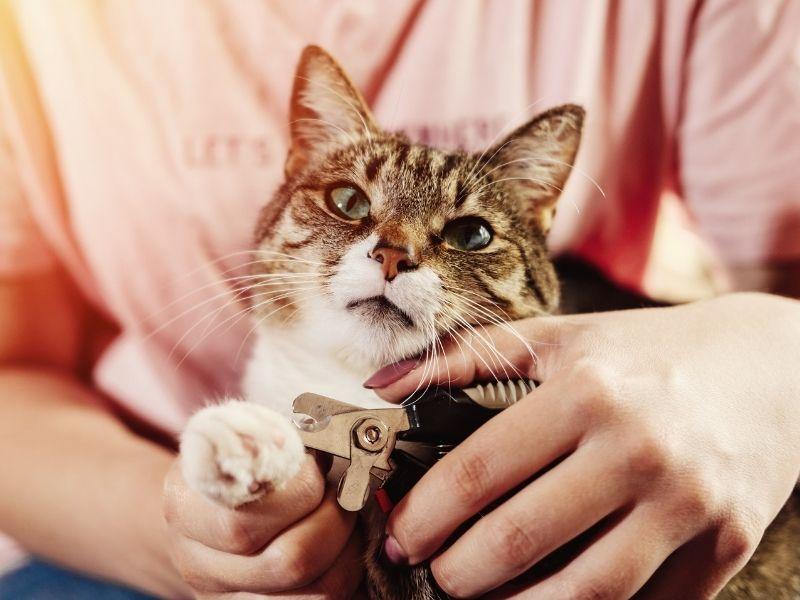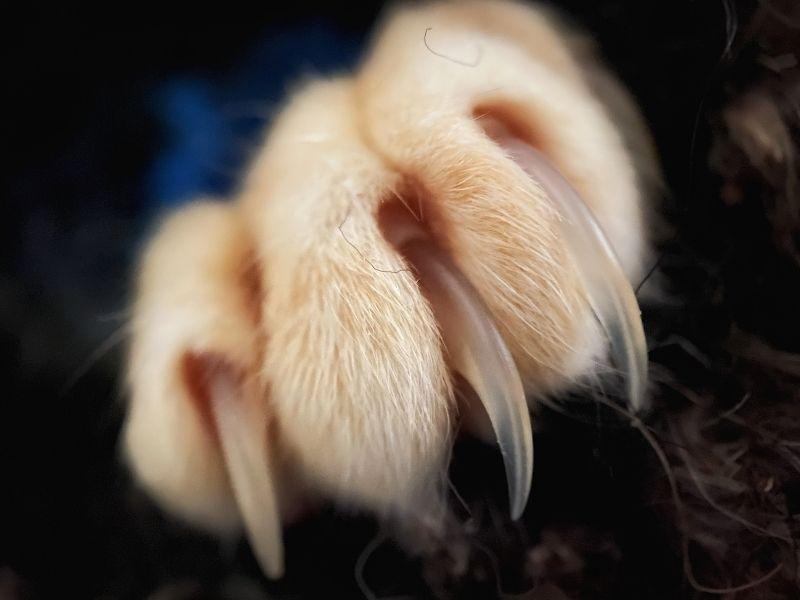Retractable claws are a feature of domestic cat breeds that allows them to extend and retract their claws at will. This can be a useful trait for cats who live in homes with children or other pets, as it gives them the ability to protect themselves if necessary. All domestic cats have this ability. The difference between breeds is in the size and strength of their claws, as well as the frequency with which they use them. The claws of some breeds are more likely to become damaged or fall off if they are used frequently.
Why are Claws Retractable?
The reason that all domestic cats have retractable claws is that they are descendants of wild cats. Wild cats need their claws for hunting and self-defense, so having the ability to extend and retract them at will is essential. Over time, domestic cats have inherited this trait from their ancestors.
When Do Cats Extend Their Claws?
Most cats will only extend their claws when they feel threatened or need to defend themselves. However, some cats may extend their claws when they are playing or when they are feeling stressed. If your cat’s claws are causing damage to your furniture or carpet, you may want to consider trimming them on a regular basis.
If you are concerned that your cat’s claws are not retracting properly, you should take them to the vet for an examination. The vet will be able to tell if there is a problem with the way the claws are growing or if there is an infection.

What’s The Difference Between Claws and Talons?
Claws and talons are both sharp, curved nails that animals use for hunting, defense, and climbing. Cats have both claws and talons, but the two have some differences. Here are some of them:
i) Location
Claws are found on all of a cat’s feet, both front and back. Talons are only found on the back feet. The talons on a cat’s hind legs are longer and sharper than the claws on its front legs.
ii) Use
Claws are used for scratching, climbing, and grooming. Talons are used for killing prey and defending against predators. The talons on a cat’s hind legs are specially adapted for these purposes.
iii) Appearance
Claws are typically less curved than talons and have a smooth, convex surface. Talons are more curved and have a serrated, concave surface.
iv) Structure
Claws are composed of a hard protein called keratin. Talons are also composed of keratin, but they have a bone core that gives them added strength.
These features show that there are some differences between claws and talons, even though they both serve similar purposes.
Are Cats the Only Animals with Retractable Claws?
No, cats are not the only animals with retractable claws. Several other species of animals have this trait, including:
i) The Otton Frog
The Otton Frog, sometimes called the Wolverine Frog, due to its hidden retractable claws. Both male and female Ottons have these claws, the male claws though are typically longer. The Otton Frog is indigenous to the islands of Japan.
ii) Red Foxes
Red Foxes also have partially retractable claws, they also, comparable to cats, have excellent night vision and hearing. Like cats too, Red Foxes are solitary hunters rather than hunting in wolf-like packs.
iii) Wolverines
Wolverines are a type of weasel that has semi-retractable claws on all four of their feet. They use their claws for digging, climbing, and catching prey.
iv) Lions
Just like most big cats, Lions have retractable claws. They use these claws for walking on land and for hunting, and retract them while playing to prevent injury. A Lion’s claw can grow up to 1.5 inches long. The Cheetah is one big cat that does not have retractable claws, it needs these claws for grip and stability to enable it to reach maximum speed. Cheetahs are the fastest land animals and can sprint up to 70 miles per hour chasing prey.
v) Pandas
Pandas have broad paws and semi-retractable claws. They use these claws for walking and tree climbing, and they are extremely useful moving from branch to branch.
As you can see, there are a variety of animals that have retractable claws. Each animal uses its claws for different activities, but they all share this common trait.

See Also: How Did Domestic Cats Evolve?
And: Do Foxes Attack Domestic Cats?
Why Do Cat Claws Fall Off?
One of the most common reasons for a cat’s claws to fall off is due to injury. If a cat gets its claw caught on something and resists, the claw can be ripped off. This is especially common with front claws, as they are not as strong as the talons on the back feet. To avoid injury, it is important to trim a cat’s nails regularly.
Another reason for a cat’s claws to fall off is due to disease. Some diseases can cause the nails to become brittle and break easily. If you notice your cat’s nails breaking or falling off, it is important to take them to the vet for an examination.
The final reason why a cat’s claws may fall off is due to old age. As a cat gets older, its nails can become thinner and weaker. This is normal and not cause for concern.
As you can see, there are several reasons why a cat’s claws may fall off. In most cases, it is nothing to worry about. However, if you notice your cat’s nails breaking or falling off, it is important to take them to the vet for an examination.
You can also take some measures to prevent your cat’s claws from falling off, such as trimming their nails regularly. The best way to trim a cat’s nails is to use a nail trimmer designed specifically for cats.
Take care not to cut too close to the nail bed, as this can cause bleeding. If you are not comfortable trimming your cat’s nails, you can take them to a groomer or vet for assistance. Also, be sure to provide your cat with plenty of scratching posts and toys to keep their claws healthy and strong.
As you can see, there are a variety of animals that have retractable claws. Each animal uses its claws for different activities, but they all share this common trait. Cats are not the only animals with retractable claws, but they are one of the most common. There are several reasons why a cat’s claws may fall off, but in most cases, it is nothing to worry about. You can take some measures to prevent your cat’s claws from falling off, such as trimming their nails regularly. With the proper care, your cat’s claws will stay healthy and strong.
Featured image: Close up of a cat’s paw showing claws

